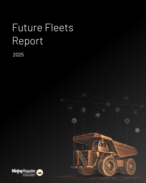Yesterday Treasurer Wayne Swan said the government had agreed with the key recommendations of the Policy Transition Group headed by Resources Minister Martin Ferguson and former BHP Billiton chairman Don Argus.
Ernst & Young Australian mining leader Scott Grimley said while there were “no real surprises” in the government’s decision today to accept all 98 recommendations of the PTG, he said miners needed to act quickly to engage on issues that needed further clarification as part of the legislative process and to prepare for the tax.
Miners could no longer defer action in modelling the impact on their respective projects and, assuming the tax was enacted, this left them 15 months to work through an array of issues.
“There are significant tax, valuation, accounting and information system issues that miners need to manage now,” Grimley stressed.
“Before July 1, 2012, miners need to address these issues, in addition to managing other significant regulatory burdens both existing and proposed, such as the carbon tax.
“In particular, there is a raft of iron ore and coal producers who will be borderline in terms of the $50 million turnover threshold who have been waiting for this announcement – like the large producers, these businesses will have transition issues to manage so they really cannot afford to be idle.”
As expected, the move to credit future rises in state royalty rates has been welcomed by the Chamber of Minerals and Energy of Western Australia, but disappointed the mining industry’s peak national lobby group, the Association of Mining & Exploration Companies.
However, CME chief executive Reg Howard-Smith did say the move must not come at the expense of federal funding to the state.
“At first glance, it does go some way towards addressing industry concerns about potential ‘double dipping’ and the impact on the international competitiveness of WA projects,” he said.
“Crediting of royalties is one of several concerns CME has expressed about the MRRT model and subsequent PTG recommendations. Others include administrative efficiencies, the operation of the threshold at which the tax will apply and the need for exploration incentives.”
AMEC chief executive Simon Bennison predictably argued there were “significant points of difference” between emerging mining companies and the large multinational, multi-commodity conglomerates that had “negotiated” the MRRT framework with the Gillard government.
One of his main sticking points is that only the big three – Rio Tinto, BHP Billiton and Xstrata – agreed with the MRRT, leaving the rest of the industry and AMEC members out in the cold.
“Unfortunately, those points of difference have not been adequately considered in the PTG report, New Resource Taxation Arrangement, or the government’s response to that report,” Bennison said.
“The combined effect of these ‘points of difference’ are likely to result in the overall ‘per unit cost of production’, rate of return and investment attractiveness of emerging mining companies being detrimentally affected to the extent that it has the potential to significantly affect competitive neutrality between companies.
“We also continue to be extremely concerned that Australia’s destination as an attractive place in which to invest will be detrimentally affected, as will our sovereign risk.
“The complexity and administrative burden that this tax will place on industry and government has also not been adequately dealt with by the government.”
He concluded, “All in all, we still consider that the MRRT is poorly designed public policy, ill conceived, discriminatory and punitive, and not a strategic long-term reform program.”
























